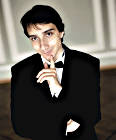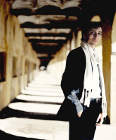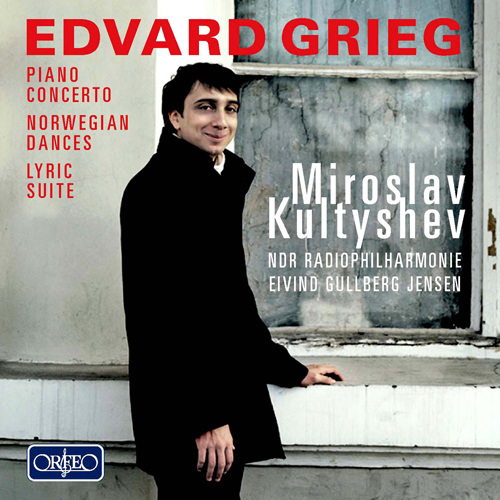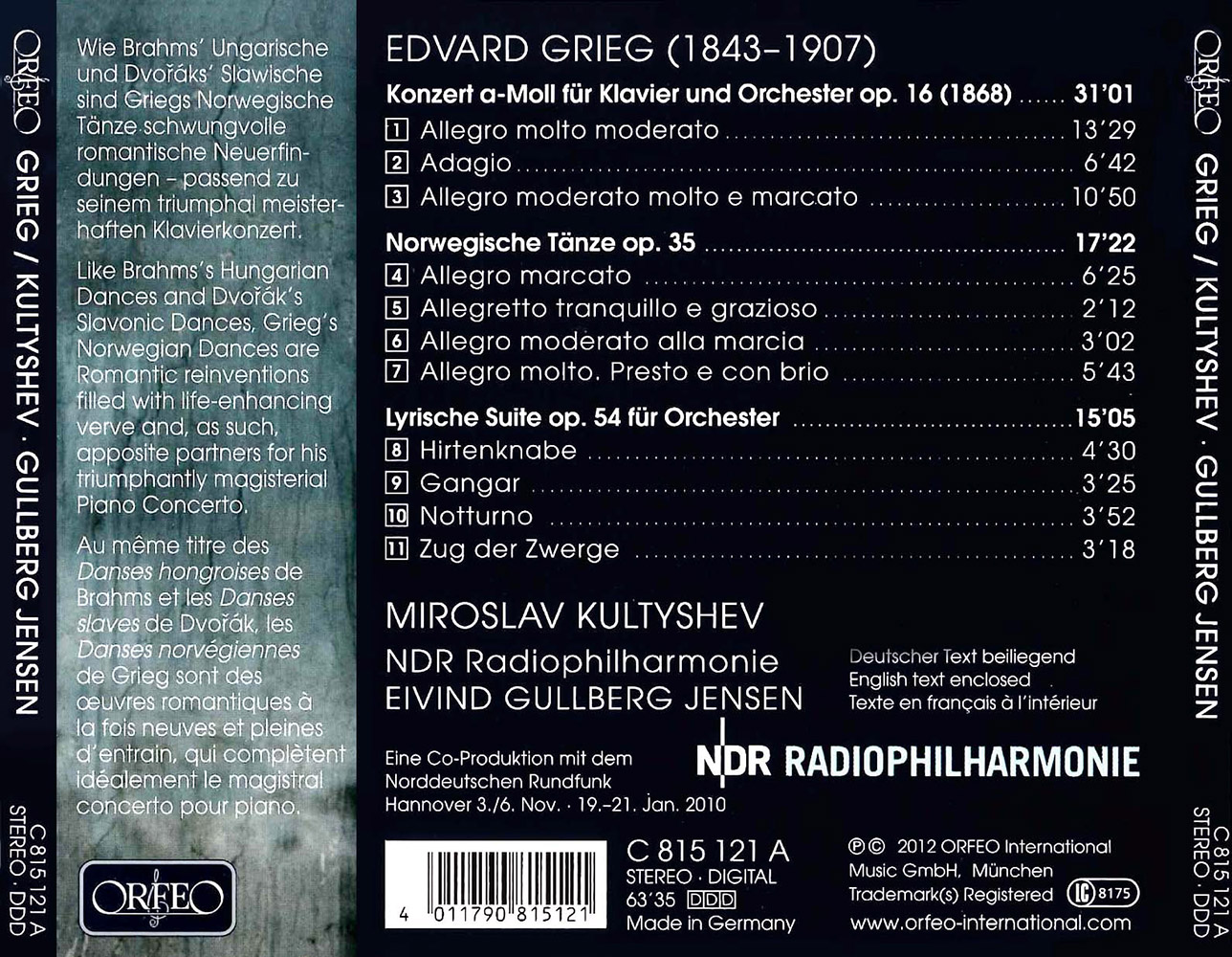Grieg: Piano Concerto - Norwegian Dances - Lyric Suite
It makes good sense for the young Russian piano virtuoso Miroslav Kultyshev to follow up his Orfeo recording of Liszt’s Études d’exécution transcendante with Grieg’s A minor Piano Concerto op. 16, a work with which the Norwegian composer took an important first step on the musical stage of his time. Writers are fond of recalling how in 1869, when he was in Rome on a scholarship, Grieg showed the piece to Liszt, who immediately sight-read it and expressed his enthusiasm for the young composer’s abilities and ideas. By this date the work had in fact already enjoyed its triumphant world première in Copenhagen, and since then it has been a permanent presence in all of the world’s great concert halls. 
Miroslav Kultyshev
Foto: Felix BroedeWith his eloquent playing, Miroslav Kultyshev brings out Grieg’s debt to Robert Schumann, notably in the chordal descent of the opening bars in the piano part and the cantabile development of the musical argument. But he also highlights the elements of Norwegian folk music that are so typical of Grieg, especially in the final movement. 
Miroslav Kultyshev
Foto: Felix BroedeMiroslav Kultyshev is sympathetically partnered by the North German Radio Philharmonic under its Norwegian principal conductor, Eivind Gullberg Jensen. Together, they continue their voyage of exploration of Grieg’s orchestral output in the form of his Lyric Suite op. 54, four splendid atmospheric portraits extending from the pastoral “Shepherd Boy” to the grotesque “March of the Dwarfs”. This is the other side of the coin of late Romanticism with its chiaroscuro contrasts that we find not least in Grieg’s incidental music to Peer Gynt. Three of Grieg’s Norwegian Dances op. 35 were played during a production of this Norwegian national drama that took place during the composer’s lifetime, and it is these that round off Orfeo’s all-Grieg programme with the North German Radio Philharmonic under Eivind Gullberg Jensen. Here, too, it is impossible to resist the spell that is cast by the musicians’ evident delight in their playing and by the invariably effective contrasts between, on the one hand, the even and warm-toned passages in the high strings and woodwinds and, on the other, the sometimes brusquely stamping sonorities of the brass and bass voices, especially in the halling, the popular Norwegian display dance on which Grieg falls back three times in this group of works, on each occasion developing the basic model along extremely lively, temperamental lines.

















